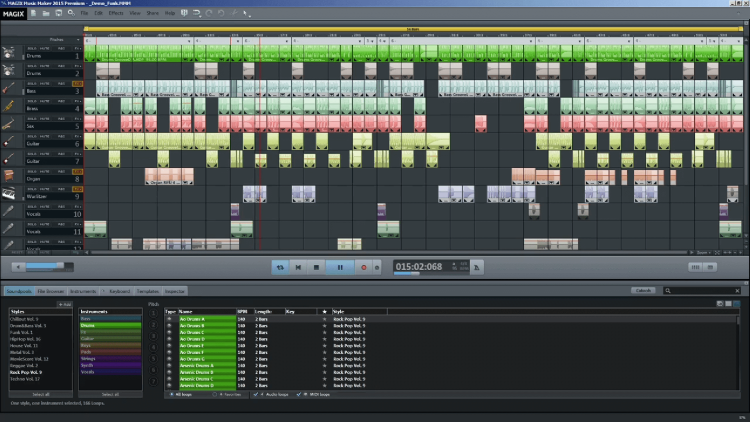

Anita Luo, Molecular Voyage, 2023, Photograph
Keywords: Consumerism, Mitosis, Watercraft, Birth of Inventions, Uncertainty, Voyage, packaging: Consumed in Consumerism, commute, materialistic lifestyle, Sigmund Freud: ego and id


Anita Luo, Machinery, 2023, Photograph
Proposal
Duality is a fact of life. When one considers cosmology and the way of life, one finds that there are always two sides to the coin—one side cannot exist without the other or harmony is broken. What can we find in this balance? I intend to depict this duality of our lives through a conversation of two images—a diptych. I hope that through the relationship between these two images, I can construct my own conceptual space and draw connections to reality. Using photography, I intend not to stop time but to track it; not to fragment space but to enlarge it; and not to tell an unmediated truth but to engage in a dialectic with others (Ritchin xx, 125).
Brainstorming

Inspiration & Conceptual Integration
What is the overall concept of the Diptych? What are you trying to convey?
We are consumed by consumerism. Through this photo diptych, I intend to develop my contact sheet exercise further to convey the emergence of the existence of consumerism. I would like the audience to ponder the impact of materialism and how it governs our day-to-day lives. The diptych should evoke emotions within the viewers and cause them to reflect on their own experiences with buying products or services. I do not intend to mock the materialistic lifestyle that many people adopt; I intend to give my observations and visually illustrate them through digital photography.
For the Diptych project, one cannot exist without the other. i.e. The existence of both images complete the project. One is only a partial information. What kind of conversation do the two images create and assist each other to convey the concept together?
In the first image, I would like to shoot an external view of the water bottles. For the second image, I would like to shoot an internal view of a water bottle. By using the same object, there is a connection drawn between the two images —there is a similarity in the color blue. Furthermore, the first image introduces the second. Additionally, the second image acts as a lens for the first image. I intend to incorporate the theory by Sigmund Freud, which the surrealists adopted, about our “ego” and “id” which refers to our conscious and subconscious mind. The external view of the water bottle will be our conscious mind whereas the internal view will be our subconscious. Thus, the audience becomes a mediator who tries to resolve the tension between the two images—our conscious and unconscious minds.
What image(s) do you plan to take photos of? How do you plan to manipulate the image(s) using Photoshop?
I plan to take photos of water bottles. Furthermore, for my second image, I would like to capture the inside of a water bottle to encapsulate the concept of packaging and how this packaging has in a sense packaged us and consumed us.
Adobe Photoshop practice

Process
Step 1: Contact Sheet
To take more microscopic photos of the water bottles I used a phone.

For better viewing click here: Anita Luo ContactSheet 2
Step 2: Choosing pictures with the best compositions
I initially wanted to use a photograph from my contact sheet exercise. However, I unexpectedly took very interesting angles of the water bottle that had better elements. For example, “IMG_2814” looked like a microscopic view of the splitting of a cell in mitosis. Thus, I was inspired to incorporate more scientific elements into my project.
Step 3: Using Adobe Photoshop
I utilized levels, curves, brightness/contrast, and unsharp masks to touch up all the images.


I tested different blending modes to overlap images to create more atmospheric quality for my second image. I also added handles from a metro train by removing its background.


Adaptation Mapping
- One of the challenges of capturing small subjects like the inside of the bottle was finding the most suitable equipment to take photographs. Due to its accessibility and my familiarity with it, I decided to use my sister’s iPhone Pro Max 14 to take the photos despite the fact that quality is not guaranteed. However, due to technology’s continuous advancements, I believe that the iPhone Pro Max 14’s quality could be comparable to a camera.
- I decided to use a composition that was completely different from my initial intentions which were the composition taken in my contact sheet exercise.
Audience Reception
My classmate Shuyu said that she liked my inclusion of keywords to guide the viewers to comprehend the intentions and messages of my work. Furthermore, she enjoyed my take on consumerism by visually presenting the material subject, the water bottle, to suggest a materialistic lifestyle.
Rationale
Duality can be illustrated by using Sigmund’s theory of the Ego and Id. Molecular Voyage delves into the human mind and reconstructs it with material to highlight the consuming lifestyle of materialism and consumerism. We are consumed in consumerism and packaged into this multiplying notion. We are on this uncertain journey of invention and we need to consider its implications and our future.
Sources
Ritchin, Fred. In Our Own Image: The Coming Revolution in Photography. Aperture.






































